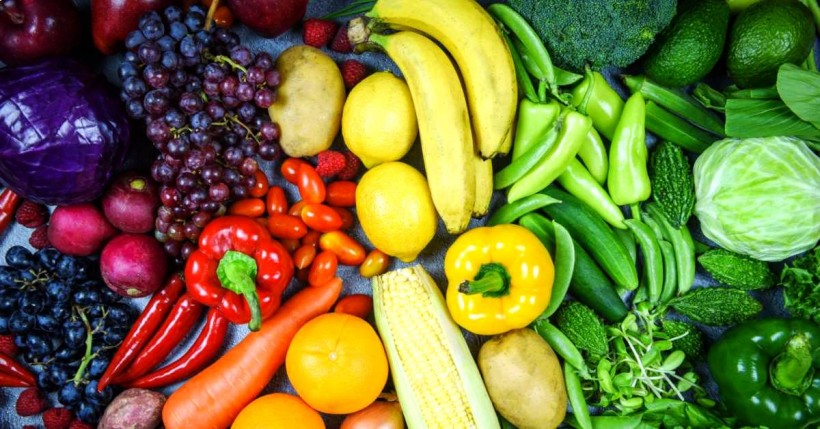15 Foods That Look Like The Body Parts They Benefit
Warning: Undefined variable $post in /home/dietofli/public_html/wp-content/plugins/code-snippets/php/snippet-ops.php(584) : eval()'d code on line 3
Warning: Attempt to read property "ID" on null in /home/dietofli/public_html/wp-content/plugins/code-snippets/php/snippet-ops.php(584) : eval()'d code on line 3
The estimated reading time is 6 minutes
Warning: Undefined variable $post in /home/dietofli/public_html/wp-content/plugins/oxygen/component-framework/components/classes/code-block.class.php(115) : eval()'d code on line 3
Warning: Attempt to read property "ID" on null in /home/dietofli/public_html/wp-content/plugins/oxygen/component-framework/components/classes/code-block.class.php(115) : eval()'d code on line 3

Everyone knows that eating a healthy and balanced diet improves our overall health. For example, you have probably heard that eating walnuts benefit your brain, whereas eating tomatoes is good for your heart. And what's interesting is that if you look closely at the shape of walnuts and tomatoes, you'll see that they actually look like the organs they're good for. Is this just a coincidence, or does nature offer a clue about what foods we should eat to benefit certain parts of our bodies?
No one knows the answer to this question, but one sure thing is that the shapes of some foods indicate their benefits.
In what follows, we've presented a list of 15 foods that look like the organs they benefit.
Here it is:
-
Tomatoes – Heart
Just like the heart, tomatoes are red. And if you slice a tomato and look closely at it, you can find a striking similarity between its structure and the heart's four chambers.
Tomatoes are high in lycopene, an antioxidant that has been linked to a lower risk of cardiovascular disease and cancer. Lycopene also protects normal cells in the body from damage caused by free radicals. This antioxidant has also been found to lower systolic blood pressure (1,2,3).
-
Walnuts - The Brain
The wrinkles and folds of walnuts look like the wrinkles and folds of the human brain. And if you look more closely at walnuts, you'll notice a similarity between their structure and the two hemispheres of the brain.
Not only do walnuts resemble the brain, they also benefit it. Walnuts are a rich source of alpha-linolenic acid, which is one of the three main omega-3 fatty acids. This omega-3 fatty acid improves cognitive performance, enhances memory retention, and protects brain health.
-
Carrots – Eyes
You're probably wondering why carrots are on this list since they don't resemble our eyes but slice one carrot into circles, and you'll see that the small lines on the carrot look like your iris and pupil.
Carrots are packed with beta-carotene, a carotenoid that is converted into vitamin A in the body. Consuming foods high in carotenoids helps support eye health and prevent eye diseases, such as macular degeneration and cataracts.
-
Avocados – Uterus
Not only does the shape of an avocado resembles the shape of the uterus, but avocados also benefit the uterus and cervix.
Avocados are a rich source of folic acid, which can prevent congenital anomalies (4). In addition, folic acid has also been associated with a decreased risk of cervical dysplasia.
Doctors recommend that women trying to get pregnant or are pregnant take folic acid.
Regularly consuming avocados can also help women lose unwanted post-pregnancy weight.
-
Sweet Potatoes – Pancreas
A sweet potato resembles the pancreas, but it also benefits pancreatic health.
The pancreas plays an important role in regulating blood sugar levels. So doctors recommend that people with diabetes consume sweet potatoes because this can help balance their glycemic index and improve the function of the pancreas.
Sweet potatoes, particularly orange sweet potatoes, have a lower glycemic index and are beneficial for people who have diabetes.
-
Ginger – Stomach
Ginger looks like our stomach, but it also benefits it. Eating ginger helps improve digestion and treat various stomach conditions, such as colic, irritable bowel syndrome, gas, nausea, and diarrhea. Ginger has also been found to have the potential to hinder the growth of colorectal cancer cells and treat gastric disorders, such as ulcers (5,6)
-
Celery – Bones
A stalk of celery looks like our bones. But, our bones and this vegetable have one more thing in common. Twenty-five percent of sodium in the body is found in our bones. And celery is high in this nutrient.
In addition, celery is also a rich source of calcium and silica, and these minerals help strengthen the structure of the bones and increase their mineral density.
-
Grapes – Lungs
There's a striking similarity between grapes and the alveoli of the lungs. Moreover, eating grapes benefits respiratory health. Grape seeds contain proanthocyanidin, a chemical that alleviates symptoms of asthma caused by allergies.
Including this fruit in your diet can help lower the risk of lung cancer and emphysema.
-
Ginseng Root – Human Body
Ginseng root resembles the human body, and it benefits it in various ways. Ginseng root has anti-cancer properties. It's also been found that it can reduce inflammation and lower blood sugar levels and that it has anti-fatigue effects (7,8,9,10)
-
Pomegranates – Lungs
If you slice a pomegranate and look at it closely, you'll see that it resembles the lungs and alveoli. Their resemblance is not the only thing that they have in common. Pomegranates help keep your lungs healthy. Research has found that pomegranate extracts hinder the growth of lung cancer cells in culture (11).
-
Olives – Ovaries
Not only do olives look like the ovaries, but they also benefit them. In one study, increased consumption of olive oil has been associated with a lower risk of ovarian cancer (12).
-
Onions – Body Cells
There's one thing that most people don't like about onions: chopping them makes you cry. But, if we take into consideration the fact that tears are good for the eyes because they clear their epithelial layers, I believe we can all agree that this benefit is worth the tears.
The body part that onions resemble is the cells in the body. Moreover, onions are beneficial to the body at a cellular level, too, since they can help clear body cells of waste material.
-
Grapefruits – Mammary Glands
Grapefruits, including lemons and oranges, strongly resemble the mammary glands of females. This is because grapefruits assist lymph movements in the mammary glands. In addition, this fruit contains limonoids that prevent tumors' growth (13).
-
Mushrooms – Ears
If you slice mushrooms and turn them sideways, you'll notice that their shape is similar to ears. Mushrooms are a good source of vitamin D, and vitamin D deficiency has been associated with sudden sensory-neural hearing loss and cochlear deafness (14,15).
-
Bananas- Smile
Bananas resemble a smile. But did you know that eating bananas can help make you cheerful and put a smile on your face?
The reason for this is that bananas contain tryptophan, a protein that promotes the production of serotonin, the "feel-good" hormone in the body. Serotonin is a chemical that is responsible for elevating your mood.














